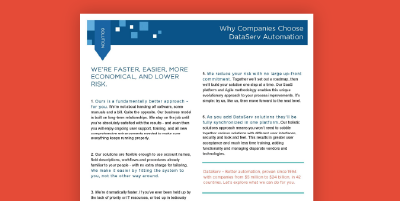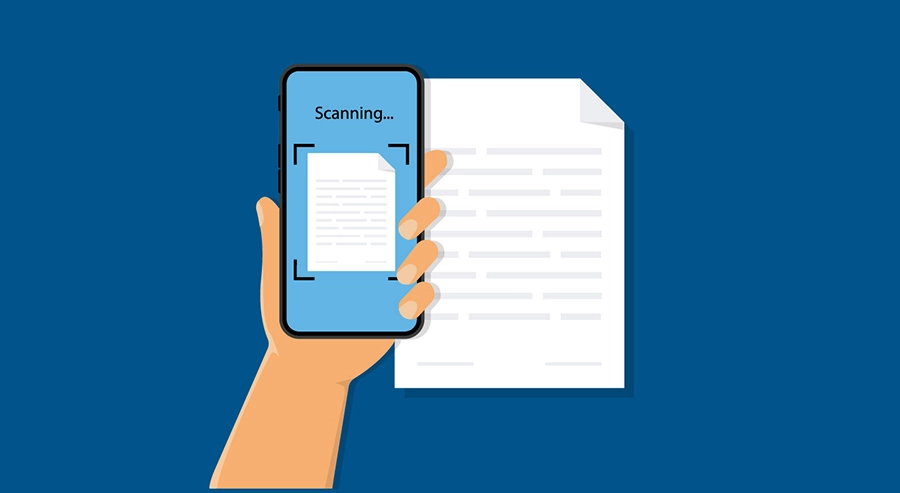Yet another acronym has made its way into the finance industry, APA, which stands for accounts payable automation. This was formerly known as APIA, which stood for accounts payable invoice automation. It has caused some confusion in the industry, making you wonder, “Is this a new concept, a new product, new technology?” The answer is simple: no. It’s in the name. Simply put, APA is the automation of the accounts payable portion of your larger financial process.
RELATED CONTENT
Other resources you might find helpful:
Why is APA Gaining Popularity?
For years, businesses seeking to optimize their financial workflows primarily turned to Procure-to-Pay (P2P) solutions. However, implementing these large-scale systems can be expensive, disrupt operations, and involve lengthy adoption timelines.
Now, organizations recognize that Accounts Payable Automation (APA) offers a more practical alternative. According to Gartner, spending on APA is projected to exceed $1.9 billion within the next five years, highlighting its rapid adoption as a cost-effective, high-return-on-investment solution for automating invoice processing.
Key Benefits of Accounts Payable Automation (APA)?
In 2021, Ardent Partners reported that the number one challenge for AP teams was the time required for invoice and payment approvals. Much of this pain comes from chasing down the right person to approve transactions. Let’s talk about how APA (Accounts Payable Automation) software reduces invoice processing time, your AP staff’s workload, and saves your business money.
Here’s how APA software transforms the accounts payable process:
- Accelerates Invoice Processing (bold these) – Reduces processing time from an average of 8 days to mere seconds for invoices that meet pre-set matching criteria, thanks to automated capture and matching.
- Reduces Human Errors – Eliminates manual data entry mistakes using AI-driven validation and OCR technology.
- Enhances Fraud Detection – Identifies duplicate invoices and detects suspicious transactions before they impact financials.
- Cuts Costs & Increases ROI – Reduces reliance on manual labor and lowers overhead expenses.
- Streamlines Approval Workflows – Ensures invoices are automatically routed to the correct approvers, preventing bottlenecks.
By implementing APA tools, businesses can free up finance teams to focus on strategic financial planning rather than chasing approvals and fixing errors.
Top Features of Accounts Payable Automation Software
When using an advanced SaaS platform, your APA solution can seamlessly integrate with numerous business systems — from ERPs to MRPs to Financial Management to Email in both software and cloud environments. For instance, DataServ’s ERP Integration Library has enabled clients to seamlessly connect with platforms like SAP and Oracle, reducing implementation time and ongoing maintenance costs. This keeps your total cost of ownership low, as well as ongoing maintenance, to a minimum.
Key APA Features:
Not only can you find APA solutions that are compatible with your existing software and ERP systems, but financial leaders eager to capitalize on the latest technological innovations can take advantage of features such as:
Seamless ERP Integration – Syncs with major financial platforms (SAP, NetSuite, Oracle, etc.) for smooth operations.
AI-Powered OCR & Data Capture – Digitizes invoices regardless of format (PDF, email, scanned documents).
Machine Learning for Automated Invoice Coding – Learns company-specific coding rules to classify expenses correctly.
Cloud-Based Accessibility – Allows AP teams to securely manage invoice workflows from any location.
Touchless Invoice Processing – Automates invoice-to-payment matching without requiring manual intervention.
With these advanced capabilities, APA software doesn’t just speed up accounts payable—it future-proofs financial operations by reducing inefficiencies.
Why APA is a Better Alternative to P2P Solutions
Gartner has found that APA (Accounts Payable Automation) inquiries are now outpacing P2P (Procure-to-Pay) inquiries. Companies are avoiding full P2P overhauls due to high costs, disruption, and the extensive updates needed in areas like product ordering, supplier requisition, budget authorization, and invoice processing. This transformation involves significant investment in human resources, vendor delays, and automation software.
In contrast, APA is gaining popularity for its simpler, more focused approach, automating invoice processing with a smaller investment and faster ROI. APA can serve as a stepping stone to broader P2P adoption for companies that want to scale gradually. For example, APA offers a module approach, allowing companies to start with invoice automation and expand to full P2P solutions as their needs evolve.
Why APA is a Smarter Investment:
Key reasons APA is gaining traction:
- Lower financial investment compared to P2P.
- Faster ROI due to its focused nature.
- Focuses on automating invoice processing, a major pain point.
- Less disruptive and easier to implement.
Given these advantages, it’s no surprise that more companies are choosing APA over a full P2P overhaul.
Ready to Automate Your AP Process?
Tired of manual invoice approvals and payment processing delays? APA can help.
See APA in action—watch a free demo!







